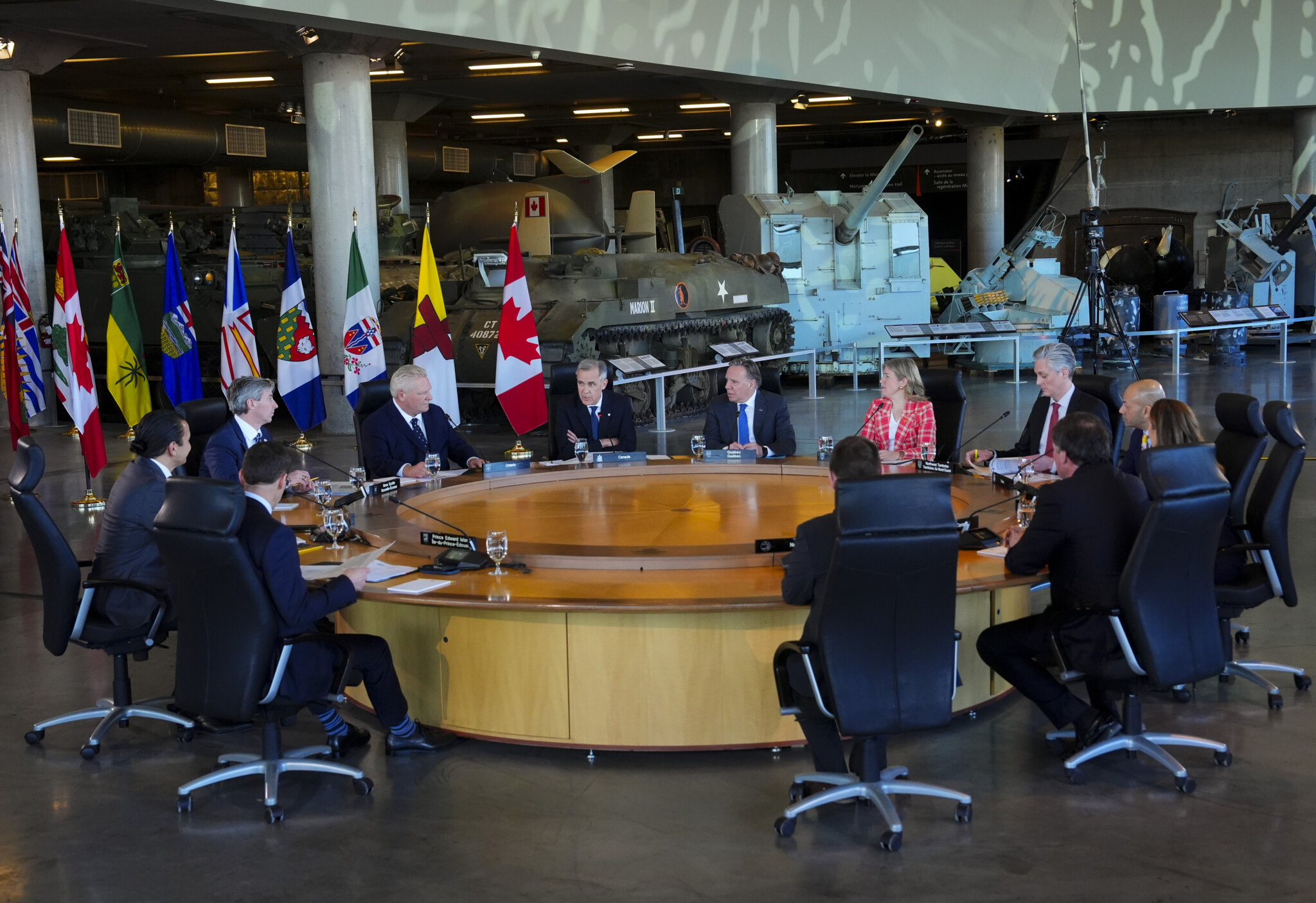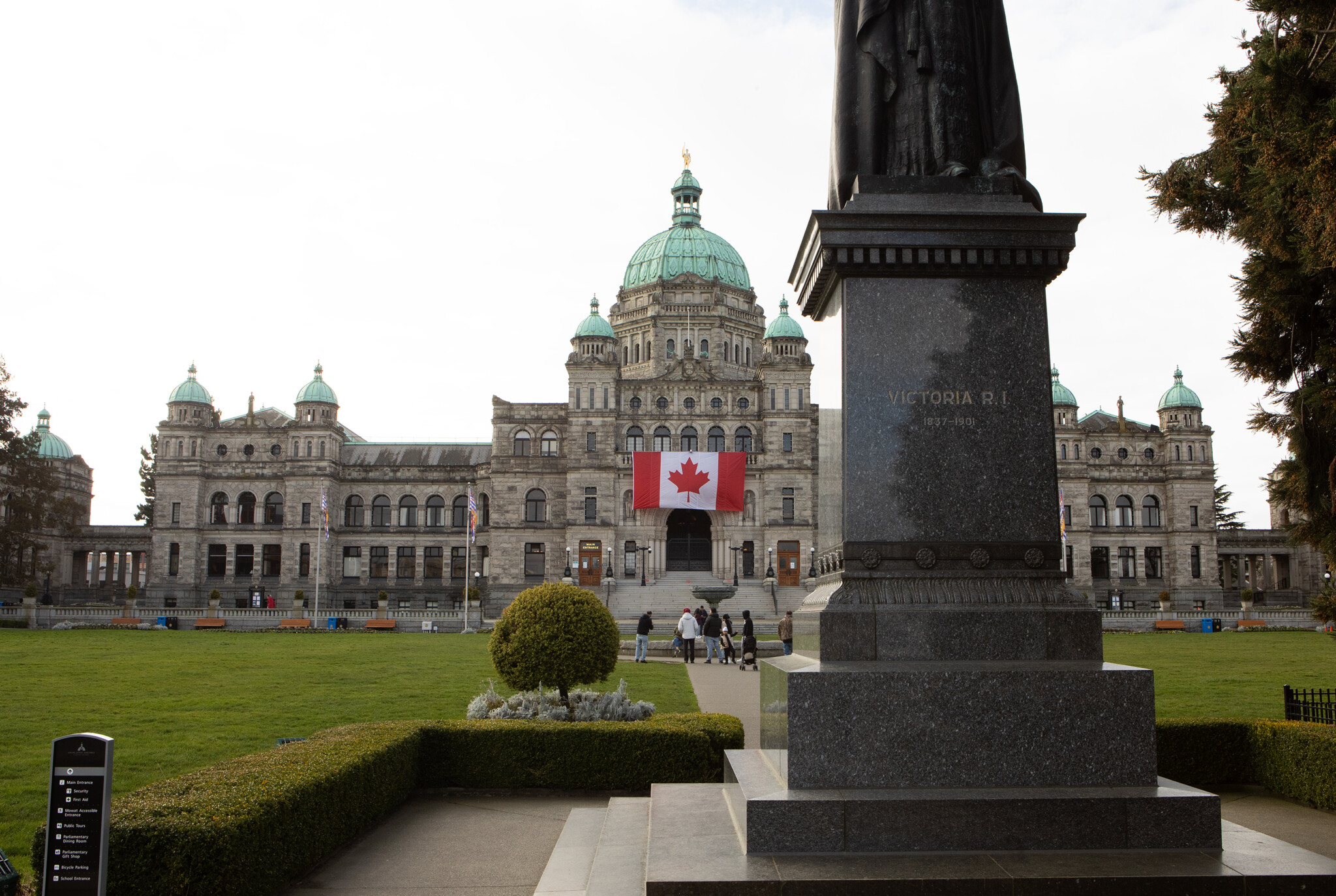DeepDives is a bi-weekly essay series exploring key issues related to the economy. The goal of the series is to provide Hub readers with original analysis of the economic trends and ideas that are shaping this high-stakes moment for Canadian productivity, prosperity, and economic well-being. The series features the writing of leading academics, area experts, and policy practitioners.
“Methinks I see in my mind a noble and puissant nation rousing herself like a strong man after sleep, and shaking her invincible locks…” – John Milton, Areopagitica
Let Trudeau be our guide: How provincial power can break Ottawa’s grip
In 1961, Pierre Elliott Trudeau published an essay, The Practice and Theory of Federalism, that remains among the most intellectually coherent and politically subtle defences of Canadian federalism. Trudeau did not merely justify, in abstract terms, the peculiar geometry of our constitutional order; rather, he advanced a bold—albeit cynical—argument: that federalism was more than a compromise between national unity and local autonomy. It was, in his telling, a strategic instrument for translating abstract socialist ideals into concrete policy outcomes. Trudeau’s defence of federalism was nothing short of Machiavellian in its elegance—even if the conception of the good underpinning his project was one not universally shared.
Allow me to quote from Trudeau’s essay at length:
If the whole of the Canadian electorate could miraculously be converted to socialist ideals at one fell swoop, there would be no reason to discuss strategy in the present context. Socialism would be achieved with or without federalism, and socialist administrations would be installed at every level of governmental affairs, no matter what the form of the constitution.
But such is not the case. In a non-revolutionary society and in non-revolutionary times, no manner of reform can be implanted with sudden universality. Democratic reformers must proceed step by step, convincing little bands of intellectuals here, rallying sections of the working class there, and appealing to the underprivileged in the next place. The drive towards power must begin with the establishment of bridgeheads, since at the outset it is obviously easier to convert specific groups or localities than to win over an absolute majority of the whole nation. […]
In the absence of P.R. it seems obvious that the multi-state system of a federal constitution is the next best thing. (Indeed the experience of that superb strategist Mao Tse-tung might lead us to conclude that in a vast and heterogeneous country, the possibility of establishing socialist strongholds in certain regions is the very best thing.)
That it was Trudeau who made these arguments should not dissuade those of us who count ourselves conservatives from studying them attentively. We have much to learn from the author of this essay, who would later go on to usher in the modern Canadian state.
Today, with the institutional machinery of Ottawa increasingly hostile to conservatism—and with the federal apparatus groaning under the weight of progressive liberalism—it may be time, indeed prudent, for Canadian conservatives to follow Trudeau’s federalist map.
The Left’s insight, the Right’s opportunity
Trudeau’s claim that federalism could better serve socialist reform than centralized authority was both pragmatic and counterintuitive. He challenged the prevailing assumption—common among European socialists and others in his intellectual milieu—that centralization was a prerequisite for socialist advance. Instead, he proposed that federalism, particularly in a country as vast and diverse as Canada, could offer a more realistic and just pathway to reform.
To quote, again, from Trudeau:
A change of attitude to federalism still seems to be required within the ranks of Canadian socialism…Federalism must be welcomed as a valuable tool which permits dynamic parties to plant socialist governments in certain provinces, from which the seed of radicalism can slowly spread…It is folly to endorse strategies that are devised to swing the whole country at the same time and in the same way into the path of socialism…in terms of political tactics, the only real question democratic socialism must answer is: “Just how much reform can the majority of the people be brought to desire at the present time.’
Ironically, this insight now serves us better than it does the Left. If we are serious about shaping Canada’s future, it may be time to reorient our focus away from Ottawa and toward the provinces as the principal arenas of policy innovation and cultural renewal. Not because we are retreating from national ambition. Not because there is anything intrinsically virtuous about subnational governance. And certainly not because today’s provincial leaders are necessarily more capable agents of change than their federal counterparts. But because we must recalibrate our strategy by recognizing that the prize of federal power is often chimerical—seductive, symbolic, but structurally constrained, not unlike the struggle for King’s Landing in Game of Thrones.
Structural leverage in the provinces
1. Institutional agility
Provincial governments possess the power to act—and to act swiftly and mercilessly. Unlike the Parliament of Canada, every Canadian province and territory operates with a unicameral legislature: one chamber, no Senate, no federal veto, and a less oppressive media environment. The benefits of this structure—particularly unicameralism—are often overlooked as a significant institutional advantage. It enables more nimble lawmaking, reduces procedural gridlock, and fosters clearer lines of democratic accountability. Provinces, unencumbered by many of the formal and informal chokepoints that constrain federal action, can legislate with remarkable decisiveness.
2. Governing where it matters
Provinces exercise control over most of the policy domains that shape daily life: education, health-care delivery, resource development, infrastructure, and local services. They also wield significant influence over tax policy and the administration of justice. These are precisely the arenas where conservatives can govern with the most clarity of purpose. A premier—regardless of party affiliation—will, by virtue of the authority they hold, always be a more effective check on federal overreach than a federal Opposition leader armed with question periods and press releases.

Saskatchewan Premier Scott Moe speaks during a press conference before Speech from the Throne in Regina, Monday, Nov. 25, 2024. Heywood Yu/The Canadian Press.
3. Provinces as proving grounds
It is a mistake to believe that national battles must be waged exclusively in Ottawa, or that shifting our focus to the provinces amounts to a concession of the federal stage. On the contrary, provincial victories fortify the national cause. Provinces function as proving grounds: each successful policy experiment becomes a template, each local win a model that alters national expectations, forces federal adaptation, and expands the horizon of what is politically possible.
Consider recent examples. The federal government has been unwilling—or unable—to fully roll back provincial experiments with private health-care delivery. It has struggled to compel provincial Crown corporations to collect and remit the federal carbon tax. In both cases, scofflaw provincial governments acted not by seeking permission, but by moving first—swiftly, boldly, and with enough confidence to leave Ottawa playing catch-up. They did not wait for a green light; they laid facts on the ground and dared the federal government to try to reverse them. We need more of this provincial pugnacity.
Because provincial governments can plausibly claim to reflect regional identities and needs, even audacious actions often carry a cultural legitimacy that federal impositions lack. Ottawa—frequently perceived as distant, elite-driven, and ideologically uniform—has less real capacity to impose its will across a federated country than it pretends to possess.
Reversing the ratchet: Federalism as dynamic equilibrium
It is tempting to view the federal-provincial dynamic as a one-way ratchet: a gradual, unrelenting centralization of power in Ottawa, driven by conditional funding, judicial interpretation, and elite consensus. Much of Canada’s postwar constitutional history lends credence to this perception. From health care to education to environmental regulation, the federal government has consistently extended its reach, often by leveraging the very tools the framers of Confederation did not foresee.
Provinces derive their authority from the Constitution Act, 1867, which assigns jurisdiction over specific domains, primarily in section 92. Unlike the United States—where the Tenth Amendment reserves residual powers to the states—Canada’s residual powers rest with the federal government under section 91. But this structural asymmetry does not mean that provinces lack sovereignty. Within their constitutionally defined spheres, they are fully sovereign. Their powers may be more narrowly drawn than those of U.S. states, but they are not subordinate.
Canadian courts have shaped these dynamics through what is now known as the doctrine of cooperative federalism—a significant departure from the earlier model of “watertight compartments” famously described by Viscount Haldane. In its modern form, cooperative federalism builds on the double aspect doctrine, recognizing that the same matter may possess both federal and provincial dimensions. It acknowledges that both levels of government may legislate on overlapping subjects from different constitutional vantage points, such as the environment, health, or securities regulation.
Importantly, this framework has not served as a one-way ratchet for federal power. While it has, at times, legitimized federal initiatives—as in the Greenhouse Gas Pollution Pricing Act reference or the genetic non-discrimination case—it has also expanded the reach of provincial authority. Cooperative federalism has softened the once-sharp boundaries enforced by doctrines like interjurisdictional immunity, which courts now apply sparingly. It has also led to a more restrained interpretation of federal paramountcy, ensuring that valid provincial laws are not too easily displaced.
In this way, cooperative federalism is not simply a judicial concession to practical necessity—it has become a structural feature of our constitutional architecture. When properly understood, it facilitates a balance of powers, not the erosion of one order of government by another.
Cooperative federalism and the risk of soft centralization
Yet there is a danger when this doctrine is reduced to a moral expectation of deference or consensus. Invoked rhetorically, it can become a tool of soft centralization—treating provincial dissent not as legitimate difference but as obstruction. This is especially true when cooperative federalism becomes entangled with fiscal dependency, national standards, and elite norms that frame “collaboration” as synonymous with compliance.
True federalism is not about harmony—it is about structured tension. It is a political architecture designed to accommodate conflict, pluralism, and competing visions. As Trudeau understood, federalism is not merely a compact between governments—it is a strategic design that enables renewal to emerge from below when top-down authority becomes rigid or captured.
We should be cautious of cooperative federalism when it functions as a polite disguise for centralization. Instead, we must recover a vision of federalism as a productive contest of powers—one that protects diversity, fosters policy innovation, and resists ideological homogenization through the very friction that defines a healthy federation.
Constitutional federalism was never intended to enforce harmony. It was designed to preserve difference, accommodate regional variation, and serve as a bulwark against the consolidation of power—whether expressed through legislation, judicial fiat, or national narrative.
The balance between the federal government and the provinces is not fixed. It is not destined to tilt perpetually toward the centre. Power in a federation is a function of political will, institutional leverage, and strategic initiative. And in moments when the federal centre is fragmented, incoherent, or misaligned with the public mood in a province, provinces have not only the right but the capacity to push back—and, in doing so, to reshape the terms of Canadian governance.
Power is not a one-way street: Reclaiming initiative through provincial action
Consider the period that followed Donald Trump’s election and Chrystia Freeland’s resignation from cabinet. The federal government, under an unsteady and diplomatically sidelined Justin Trudeau, struggled to maintain serious relationships in Washington. In response, several provinces, notably Alberta and Ontario, took matters into their own hands. Premiers began engaging directly with American officials, bypassing Ottawa entirely. Far from being chastised for overreach, they were welcomed—bringing competence, clarity, and a direct understanding of their province’s interests. For once, the usual constitutional flow of interference was reversed: provinces marched into traditionally federal domains, not the other way around.
This episode is more than a historical curiosity; it is a reminder that federalism is fluid. The Constitution sets jurisdictional boundaries, but the real-world distribution of power is shaped by confidence, capacity, and the willingness to act—boldly, and without waiting for permission. Much of it is never litigated. When provinces believe that they—not Ottawa—are best positioned to represent their citizens, even in areas typically governed by the federal state, they can, and must, extend their influence accordingly. It is as mistaken to believe that Ottawa always wins in the end as it is to assume that Canada is always stronger when it does.
In fact, conservatives must learn to feel comfortable—even encouraged—when non-conservative provincial governments succeed in asserting their autonomy at Ottawa’s expense. While the substance of their policies may depart from our own preferences, the structural shift their actions represent—the decentralization of power from the federal government to the provinces—should be welcomed as consistent with a conservative vision of federalism.
When non-conservative premiers successfully resist federal overreach, they do more than win a policy fight; they entrench the principle of provincial sovereignty on firmer constitutional ground. Over time, this diffusion of power reshapes the federation itself—creating the institutional conditions more favourable to future conservative governance in all provinces. And in those faster-growing provinces where right-of-centre politics tends to prevail, such a rebalancing opens the door to more ambitious conservative reform.

Prime Minister Mark Carney speaks during the First Minister Meeting at the National War Museum in Ottawa on Friday, March 21, 2025. Sean Kilpatrick/The Canadian Press.
In this sense, even progressive victories can plant the seeds of future conservative opportunity—if we learn to view federalism not merely through the lens of immediate policy outcomes, but through the deeper structure of constitutional power. Federalism, after all, is not about preserving the status quo. It is about maintaining the institutional conditions that allow competing visions of the good to rise, take root, and govern.
It is true that federal institutions—courts, media, regulatory bodies—often respond with greater hostility to conservative provincial assertiveness than to progressive initiatives. But that asymmetry, while real, is not a reason to retreat from the field. If anything, it underscores the importance of normalizing provincial autonomy across the political spectrum. Every successful instance of provincial resistance, even when pursued for progressive ends, further entrenches the legitimacy of subnational initiative as such. Over time, these precedents weaken Ottawa’s monopoly on moral and constitutional authority. The more provincial sovereignty is exercised—regardless of ideological content—the more difficult it becomes for federal institutions to selectively suppress it without exposing their partiality. The goal is not to achieve fairness from institutions that are often structurally aligned against us; it is to alter the terrain beneath them. Structural gains do not require ideological reciprocity—they require repetition, normalization, and friction.
The tilted playing field: Federal dominance and the provincial advantage
A basic political truth deserves sustained attention: despite repeated scandals, policy failures, and mounting public exhaustion, the federal Liberal Party continues to win national elections. Why? In large part because Ottawa is structurally tilted in its favour.
Even if Conservatives were to win a federal election—which, by now, should be seen as anything but inevitable, even in the face of extraordinary Liberal mismanagement—can we seriously expect Ottawa’s institutional machinery to enable meaningful change? The public service is staffed by a permanent bureaucracy whose ideological commitments overwhelmingly lean progressive. The judiciary—most notably the Supreme Court—has evolved into an engine of liberal jurisprudence, increasingly shaping the Constitution in activist and interpretive ways under the guise of neutral legal reasoning. The Senate remains unelected, largely unaccountable, and more attuned to the normative assumptions of the urban progressive class than to any democratic constituency. Meanwhile, the national media—now heavily reliant on federal subsidy—operates as a cultural validator, reinforcing rather than interrogating the prevailing ideological order. In short, Ottawa is no longer merely a site of political contestation; it is a regime structured to absorb and deflect conservative impulses, even in the unlikely event that they acquire temporary electoral legitimacy.
The electoral map itself compounds the problem. While Conservatives can dominate in Alberta and Saskatchewan, Liberal support is distributed with ruthless efficiency—clustered in a way that tilts the seat count decisively in their favour. Even when federal Conservatives win the popular vote, they struggle to convert that support into legislative control. Worse still, the balance of power in Parliament often rests with opposition parties whose members and voters are far more inclined to sustain a Liberal minority government than to ever enable a Conservative one.
This structural disadvantage is not merely electoral—it is psychological. Many progressive voters view the federal Conservative Party not as a legitimate governing option but as a threat to be neutralized. This results in an asymmetrical political culture in which Liberal missteps are tolerated in the name of keeping Conservatives out, and in which the Left’s electoral coalition coheres not around shared aspiration but around shared aversion.
For conservatives, the consequences are profound. The political cost of winning federally grows higher, while the policy returns grow weaker. A hypothetical Conservative federal government, in order to become electorally viable, would likely have to dilute its principles to such an extent that governing meaningfully would become impossible. And if federal power can only be won by surrendering the very ideas that justify seeking it, then what, exactly, is the point of winning it at all?
Provincial power as a Conservative counterweight
In contrast to the bleak structural realities of federal politics, the provincial landscape offers a markedly different—and more promising—terrain. Conservative parties currently govern a majority of provinces, and unlike the federal map, which rewards our opponents’ distribution, provincial political geographies often work in our favour. A strategic focus on expanding provincial power is not a retreat from national ambition; it is the foundation from which national transformation might realistically emerge. Each provincial success—however localized—builds political capacity, develops governing talent, models reform in real time, and cultivates public trust. Over time, this accretion of competence reshapes the contours of what is seen as possible federally.
To return, again, to Trudeau’s essay, here speaking of the CCF:
[The lack of enthusiasm of CCF tacticians for provincial autonomy] is amazing in face of the fact that the CCF has become the Government or the official Opposition in several provinces, whereas it has never come within sight of such successes in the national Parliament… It is strange that on the one hand CCF tacticians often argue that the road to power at the national level might have to pass through the election of socialist administrations at the municipal level, but that on the other hand, by casting themselves as very unenthusiastic supporters of provincial autonomy, they make it difficult for themselves to follow the provincial highroads towards national power.
This observation contains a lesson that conservatives, ironically, have been slow to absorb. Political victory does not always come from meeting opponents head-on in their chosen terrain—it often comes from shifting the ground beneath their feet. Like the Greeks at Salamis who drew the Persian navy into narrow straits where size became liability, not advantage, conservative provinces can exploit the structural asymmetries of federalism to resist and outmaneuver an overextended federal liberalism. The provinces—smaller, more agile, more directly accountable—possess a tactical leverage that Ottawa, for all its formal power, often lacks. Rather than dissipating energy in the wide waters of federal politics, we must concentrate our efforts where our institutional and democratic advantages lie.
To those who claim that Canada’s national unity requires an ever-strengthening federal centre, I would offer the inverse proposition: that unity is now more endangered by the dysfunction, illegitimacy, and cultural remoteness of Ottawa than by the constitutional self-assertion of provinces. Unity, rightly understood, is not the suppression of difference but its accommodation within a stable constitutional structure. Indeed, a Machiavellian commitment to federalism—as Trudeau framed it—is not only compatible with unity, it may be the only way to preserve it.
Empowered provinces provide institutional space for regional identities, language and cultural pluralism, and differentiated policy experimentation—features that, when suppressed, provoke alienation and secessionist temptation. Paradoxically, by institutionalizing difference, federalism makes separatism less necessary. A decentralist federation, if competently stewarded, offers alienated regions a genuine stake in the national compact. The threat to unity lies not in the centrifugal pull of provincialism, but in a centre that governs large parts of the country without moral legitimacy, democratic sensitivity, or constitutional restraint.
There is, however, a deeper strategic worry: that an intensified focus on provincial autonomy could fragment the national conservative coalition. By emphasizing provincial autonomy, we risk amplifying differences between different provinces’ conservatisms and turning the conservative movement into a patchwork of mutually unintelligible factions. In such a scenario, national messaging becomes difficult, and coordination across regions becomes fragile. But this diversity need not be a weakness. In fact, it mirrors the genius of federalism itself. The challenge is not to suppress regional differences, but to allow each provincial conservatism to flourish on its own terms while cultivating a shared constitutional vision.

A gigantic Canadian flag hangs over the ceremonial entrance at the legislature as people walk about in Victoria, B.C., on Friday, March 7, 2025. Chad Hipolito/The Canadian Press.
Rather than thinking of federal conservatism as a monolith, we should re-conceive it as a confederation of conservative movements, united by a common commitment to provincial autonomy, institutional pluralism, and a restrained central state. National conservatism then becomes a coordination project—not a command structure. Its task is to provide language, infrastructure, and occasional unity of purpose, while respecting that the work of governance and renewal will differ province to province.
This reorientation would not weaken the federal Conservative Party—it could strengthen it by aligning it more closely with the real sources of conservative power and energy in the country. It would encourage the party to act less like a centrist brokerage machine and more like a strategic facilitator of provincial innovation and resistance. That in turn might help the federal party become more ideologically coherent and culturally confident, grounded in actual policy achievements and lived regional legitimacy, rather than in symbolic promises it may never be structurally able to deliver from Ottawa.
There are other reasonable arguments for conservative skepticism toward federalism worth addressing. At its core, federalism presupposes the existence of multiple, independent sources of political authority—an architecture of divided sovereignty. Some conservatives may see in this dispersion of power a structural advantage for the political Left, which tends to favour an expansive role for government. From this vantage point, more governments mean more opportunities to regulate, tax, and intrude—especially when progressive ideas flow freely through academic, legal, and bureaucratic channels that can replicate themselves across jurisdictions. Why, some might ask, would conservatives embrace a framework that multiplies the number of institutions susceptible to progressive capture?
I think the answer to this critique is that it will unlock a deeper institutional dynamism. Federalism should not be viewed merely as a mechanism for preserving diversity, but as a structure that fosters interjurisdictional competition, innovation, and discipline. When subnational governments are empowered and accountable to their own electorates, they must earn their legitimacy through outcomes rather than slogans. This creates a marketplace of governance in which better ideas displace worse ones—not through top-down consensus, but through demonstration and emulation.
This logic holds real promise for Canadian conservatism. Rather than diluting policy to chase national consensus, provincial governments can pursue coherent reforms that reflect local cultures and values. If successful, those reforms become proofs of concept, exerting bottom-up pressure on other provinces and eventually Ottawa. Over time, this generates a form of institutional evolution: successful models spread, failures are exposed, and conservative governance becomes legible and credible to a broader public. This kind of federalism breeds dynamism where Ottawa breeds stasis.
Of course, not all federalism is virtuous. A federalism in which some provinces collude with the federal government to avoid competition is a real and growing danger in Canada. Many federal programs impose standards that serve to flatten difference, suppress innovation, and entrench mediocrity. A reinvigorated conservatism must resist the temptation to merely administer federal programs more efficiently. Instead, it must reassert provincial autonomy as a constitutional right and governing strategy—it must actively seek to decouple provincial priorities from federal tutelage, and assert the provinces’ constitutional right to do things differently—even if that means doing them better.
Conclusion: Renewal begins at the edges
If Ottawa has become structurally hostile to conservative governance—captured by a progressive bureaucracy, fortified by unelected institutions, and electorally tilted against us—then national renewal cannot begin there. It must begin in the provinces.
This is not a retreat from national ambition, but a recalibration of strategy. For too long, we have played a federal game preloaded to favour our opponents: winning votes, only to find power slipping through institutional cracks. But the provinces offer real leverage—jurisdictional tools, political footholds, and space to govern where citizens actually live.
Pierre Trudeau, writing as a young intellectual, warned the Left not to ignore provincial power. His strategic logic now favours the Right. This is how we outflank Ottawa—not with symbolic outrage, but with policy substance. Not by begging to occupy the centre, but by proving the periphery can govern. Every provincial success builds capacity, legitimacy, and momentum. It reshapes what is politically possible across the country.
And far from threatening national unity, this approach may secure it. A federation that respects difference is stronger than one that demands conformity. Alienation festers where power is remote and unresponsive. It recedes when citizens feel ownership, not imposition.
We must rediscover federalism—not as a constitutional abstraction, but as a strategic imperative. The federal party should think less like a centrist brokerage machine and more like a facilitator of provincial strength. Power in a federation is not inherited—it is asserted.
So let us assert it. Not someday, in Ottawa—but now, in the provinces. Let us build the country by building beyond the centre. From the edges in. From the ground up.











